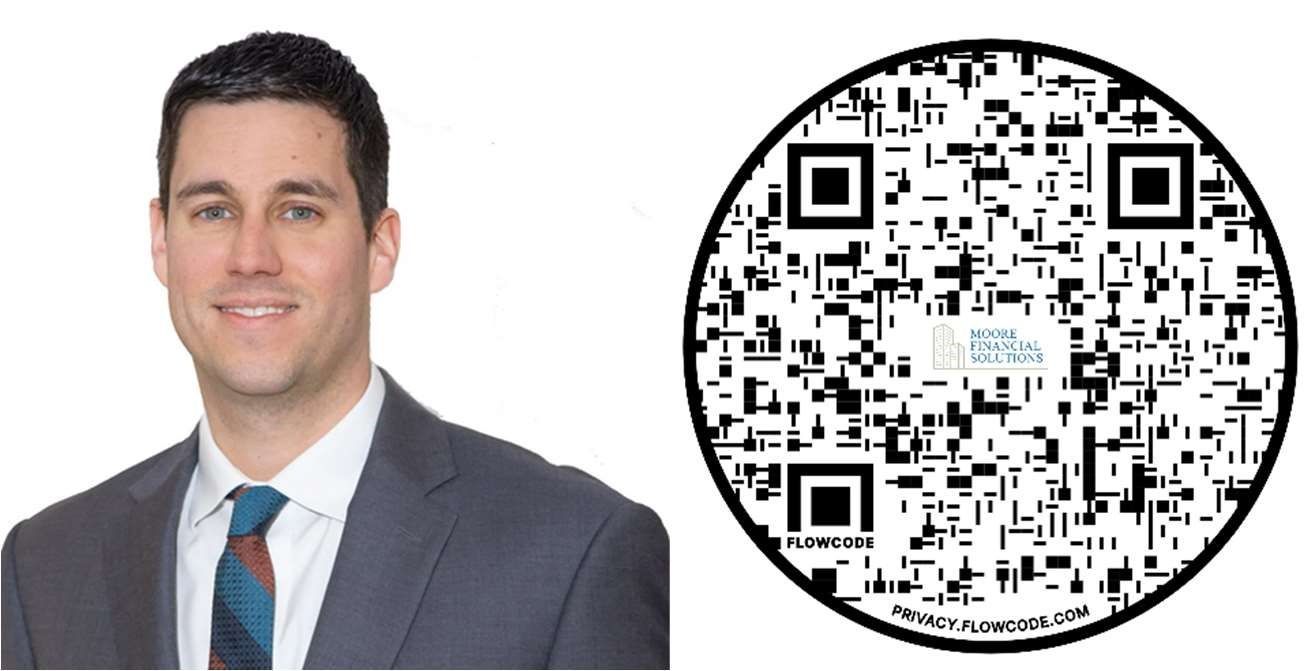
Moore Financial Solutions Third Quarter 2023
After the S&P 500 recorded an 8.3% return for Q2 in 2023, Q3 was a quick reminder of the downward trend equity investors have seen since the highest levels of January 2022. The Q3 2023 report highlights this quarter’s -3.65% S&P 500 move from 4,450.38 to 4,288.05 (1). With most Moore F.S. investors viewing their statements monthly, these last two months offer additional disappointment following a fruitful July, where the S&P 500 created a 3.11% return. We look forward to the quarterly reviews that highlight the many positive factors commonly on the horizon for U.S. equities, but for now, we are left detailing three major concerns within equity investing and a couple positives that may be looming. However, it remains my personal goal to not trade in and out of equities as these three issues could all hypothetically be resolved overnight, and Moore F.S. clients be left behind in the markets.
Since you’ve likely been leaning on the Moore F.S. quarterly reviews to get quarterly general information on what is setting the trend in your account, you’ve likely understood some basics. A major influx of cash into the economy from quantitative easing (oversimplified as the Federal Reserve adding money to the money supply since the Great Recession) as well as direct payments to citizens during the pandemic created high inflation. If left untamed, this inflationary risk could go on for a few more years and then burst into a very deep recession, or worse. Monetary policy tightening can occur by the Federal Reserve (which we will shorten in title to “the Fed”) through interest rate increases, quantitative tightening, and increases to bank’s reserve requirements. The Fed has elected to continue a firm trend of quantitative tightening and a variable trend of interest rate increases. In other words, they aim to be data dependent on the rate of interest rate hikes, and continually monitor if more interest rate increases are needed. Thus, the stock market hangs on every word the Fed presents, in hopes of identifying the short-term direction of stocks. In Q3 the Fed seemed to suggest they were ok with rates staying higher for longer given the solidity in U.S. job markets.
Up until this recent quarter, most of the Fed’s rate hikes have increased short term rates, while the long end of the yield curve was slow to react. The yield curve inverted, creating a strange occurrence of short-term yields being higher than long term yields. Moore F.S. bought more short-term debt in Q3 than any other debt. However, a major transformation occurred in Q3 2023, where longer-term interest rates suddenly increased as well. In Q3 2023, the U.S. 10 Year Treasury Note moved from 3.84% to 4.58% (2). We feel that the Fed is looking at the labor market to determine their success with interest rate increases, and they wish to see slight cracks in the labor market to ensure their battle against inflation is won. Moreover, we feel that interest rate movements are largely supply and demand driven, so until the bond market (bond investors) bought into the Fed’s determination to keep rates higher for longer, as the Fed has indicated, rates were too stubborn to move. We view the Fed’s conversation regarding accomplishing its goal as coming within 6-15 months based on these significant rate increases on the longer end of the curve. We see the Fed as a risk to the market, but also one of the greatest potential positive impacts to markets as well. The risk of the Fed’s overtightening could negatively impact markets, while the Fed signaling their work is done against inflation might be the driving factor to reach the previous 2022 market highs. Additionally, we believe the Fed will likely reduce rates within 12-18 months of their last interest rate increase, impacting stocks and bonds positively. Rate cuts occurred about eight months after the last round of rate increases, which ran from 2015-2018. These three rate cuts in 2019 were actions taken by the Fed in what the Fed referred to simply as a “mid-cycle adjustment” (3).
Another contributing factor to Q3’s lack of performance includes the unprecedented strike of the United Auto Workers union (UAW) against the big three auto makers, General Motors, Ford, and Stellantis. Wall Street weighed the risks of the domino effect that a long-lasting strike may have. “Our theoretical math suggests that labor cost increases should largely be manageable for the D-3. Further, a work stoppage should keep inventories low and support prices staying elevated, which should be a near term offset for higher wages,” RBC Capital Markets analyst Tom Narayan said in an investor note (4). Automakers represent a basic economic example of the ripples that can be sent through suppliers and local communities. Areas where UAW labor makes up a large portion of economic activity could quickly see nonessential businesses (e.g., restaurants and entertainment) close their doors. While a small supplier of windows used in the production of cars could be sitting on inventory and loans needing to be paid and could be losing money quickly. We view the risks related to the UAW strike as potentially more impactful than just lost wages in Detroit. “When GM gets a cold, the suppliers get pneumonia,” said Arthur Wheaton who is the director of labor studies at Cornell University’s School of Industrial and Labor Relations (5). Clearly, it is best to resolve the stoppages sooner than later for the broad economy. We look forward to a resolution that avoids long-term concerns and believe a deal will positively impact the broad market, continuing the theme that this issue could be resolved overnight, and we must remain allocated to equities when appropriate.
It couldn’t be a Moore F.S. quarterly review if we weren’t counting down the days until the next debt ceiling is reached, whether mentioned in our reviews or not. However, we feel each deadline becomes more difficult to reach a deal as the debt ceiling allowance ultimately is increased each time, it is currently above $33,500,000,000,000 ($33.5 trillion) (6). To put this into perspective, only three years prior this number was below $27 trillion. Another just in time deal was reached to keep the government operating until November 17th, 2023 (7). We find an uneasy feeling with the trajectory of deficit and the debt ceiling issues. Over the last year (since October 2022) the federal government’s spending exceeded its revenues by $1,524,166,099,656 ($1.52 trillion) (8). Additionally, we remain hopeful a solution can be reached before November 17th, giving the market some more breathing room. However, continually extending the debt ceiling is not fixing the underlying issue of spending, in the opinion of Moore F.S.
In summary, Q3 2023 is ending with a high level of uncertainty. Most notably this high level of uncertainty pertains to the direction of interest rates, which hinges on the results of the Fed’s fight against inflation. My goal of highlighting the main three concerns the stock market faces (the Fed, UAW strike and the debt ceiling) is not to sound pessimistic, but rather to point out that the market has already factored in these concerns. We are excited for when the issues subside, especially as it relates to the Fed signaling their work against inflation is done. I realize that investing and seeing your money go up, down, or sideways is an emotional part of your life. In the same respect, I also understand that if we simply move all your assets to Treasury bills, which do offer a nice yield on short term money, your long-term positions will not be able to keep up with and outpace inflation in the way stocks and bonds have historically. As a result, my overall goal with you is to work in a balanced manner and remind you of the volatility that comes with investing in stocks or bonds. While there are no guarantees, the stock market has the potential to build your wealth, if you give it time. Historically, $1,000 into the S&P 500 in 1994 (a 30-year investment approximately) would now be $16,255.77, which represents a 9.91% return each year with dividends. Factoring in inflation, you’d be holding $6,827.13 worth of 1994 dollars (9). Thus, I believe if investors are willing to ride the ups and downs of markets their patience may be rewarded. I thank you for our strong partnership towards your goals and the trust you place in me.
Tyler A. Moore

- https://finance.yahoo.com/quote/%5EGSPC/history/
- https://www.marketwatch.com/investing/bond/tmubmusd10y/charts?countrycode=bx&mod=mw_quote_advanced
- https://www.forbes.com/advisor/investing/fed-funds-rate-history/
- https://www.cnbc.com/2023/09/12/wall-street-sees-potential-upsides-of-uaw-autostrikes.html#:~:text=A%20UAW%20strike%20could%20%E2%80%9Cdrive,if%20tentative%20deals%20are%20reached.
- https://www.automotivedive.com/news/uaw-strike-domino-effect-suppliers-gm-general-motors-ford-stellantislear/691542/
- https://www.usdebtclock.org/index.html
- https://www.cnn.com/2023/10/01/politics/congress-spending-bill-government-open/index.html
- https://fiscaldata.treasury.gov/americas-finance-guide/national-deficit/
- https://www.officialdata.org/us/stocks/s-p-500/1926#inflation
This material has been prepared for information and educational purposes and should not be construed as a solicitation for the purchase or sell of any investment. The content is developed from sources believed to be reliable. This information is not intended to be investment, legal or tax advice. Investing involves risk, including the loss of principal. No investment strategy can guarantee a profit or protect against loss in a period of declining values. Investment advisory services offered by duly registered individuals on behalf of CreativeOne Wealth, LLC a Registered Investment Adviser. CreativeOne Wealth, LLC and Moore Financial Solutions are unaffiliated entities.


Investment advisory services offered by duly registered individuals on behalf of CreativeOne Wealth, LLC a Registered Investment Adviser. CreativeOne Wealth, LLC and Moore Financial Solutions are unaffiliated entities. ARE-8224 | 20520 - 2020/10/26
We are an independent financial services firm helping individuals create retirement strategies using a variety of investment and insurance products to custom suit their needs and objectives. Investing involves risk, including the loss of principal. No Investment strategy can guarantee a profit or protect against loss in a period of declining values. Any references to protection benefits or lifetime income generally refer to fixed insurance products, never securities or investment products. Insurance and annuity products are backed by the financial strength and claims-paying ability of the issuing insurance company. We are not rendering or offering to render personalized investment advice or financial planning advice through this website. This website is limited to the dissemination of general information on services offered. Advice can only be rendered within the context of an executed investment advisory and/or financial planning contract between the client and the advisor.
